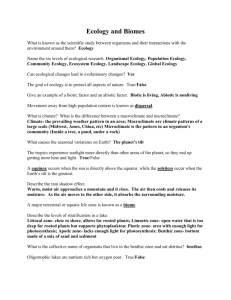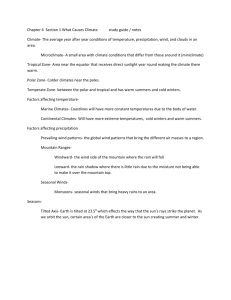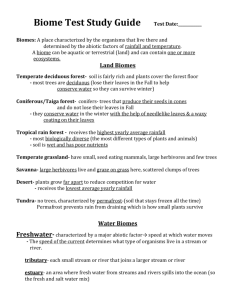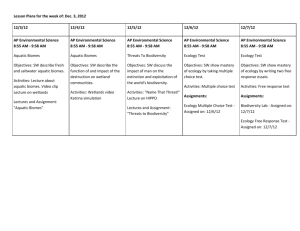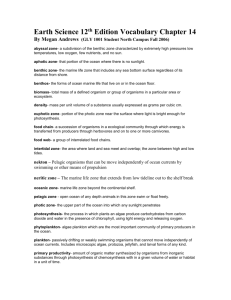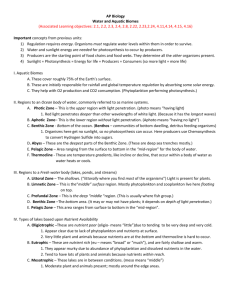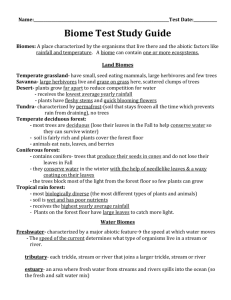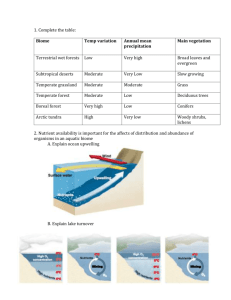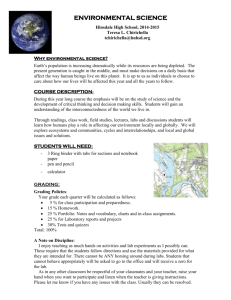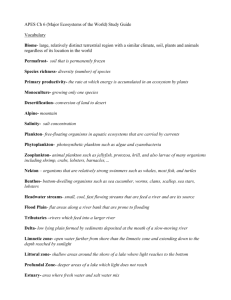File
advertisement
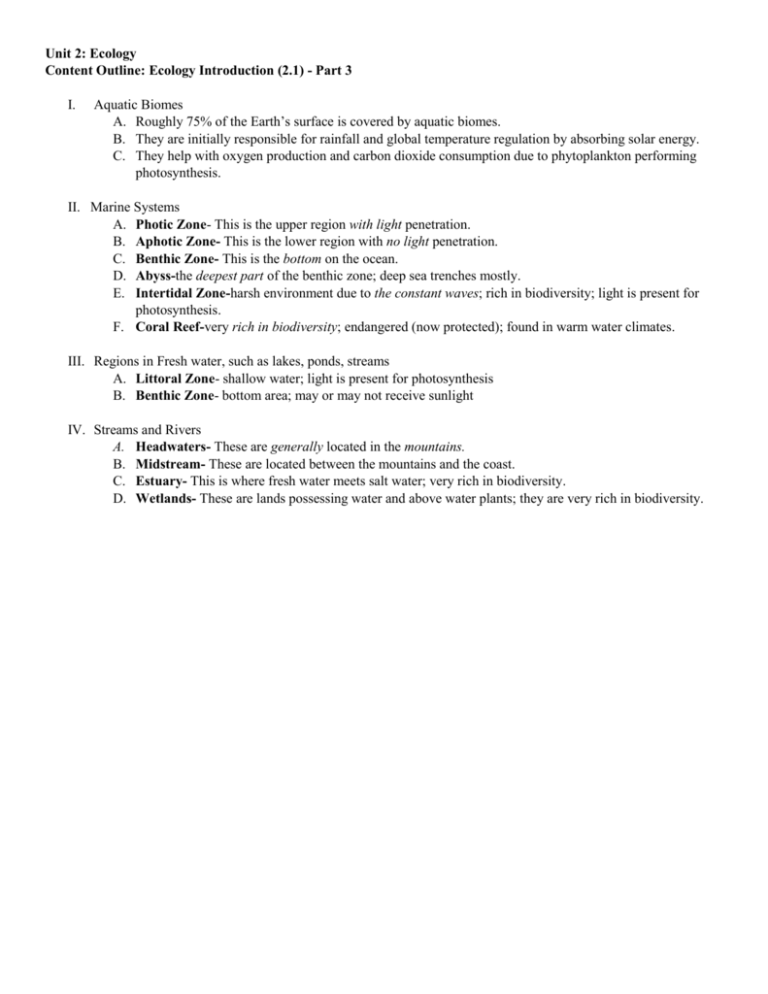
Unit 2: Ecology Content Outline: Ecology Introduction (2.1) - Part 3 I. Aquatic Biomes A. Roughly 75% of the Earth’s surface is covered by aquatic biomes. B. They are initially responsible for rainfall and global temperature regulation by absorbing solar energy. C. They help with oxygen production and carbon dioxide consumption due to phytoplankton performing photosynthesis. II. Marine Systems A. Photic Zone- This is the upper region with light penetration. B. Aphotic Zone- This is the lower region with no light penetration. C. Benthic Zone- This is the bottom on the ocean. D. Abyss-the deepest part of the benthic zone; deep sea trenches mostly. E. Intertidal Zone-harsh environment due to the constant waves; rich in biodiversity; light is present for photosynthesis. F. Coral Reef-very rich in biodiversity; endangered (now protected); found in warm water climates. III. Regions in Fresh water, such as lakes, ponds, streams A. Littoral Zone- shallow water; light is present for photosynthesis B. Benthic Zone- bottom area; may or may not receive sunlight IV. Streams and Rivers A. Headwaters- These are generally located in the mountains. B. Midstream- These are located between the mountains and the coast. C. Estuary- This is where fresh water meets salt water; very rich in biodiversity. D. Wetlands- These are lands possessing water and above water plants; they are very rich in biodiversity.
